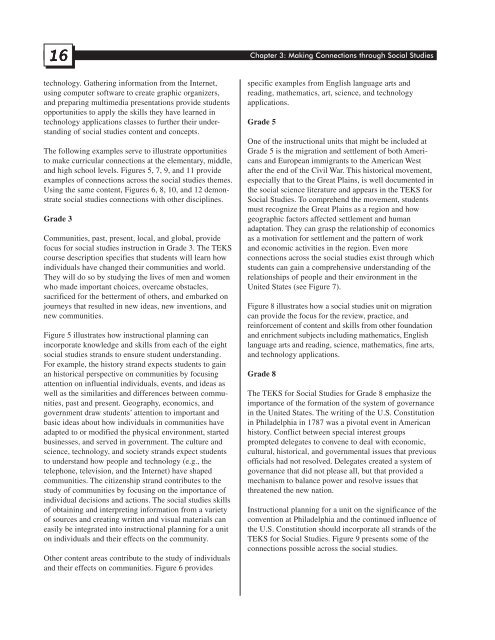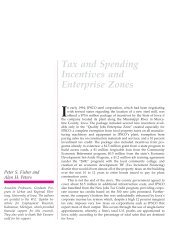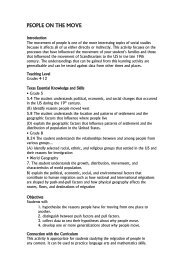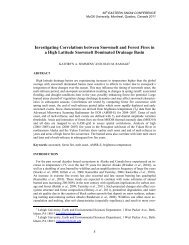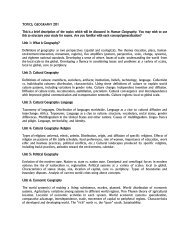Texas Social Studies Framework - Department of Geography ...
Texas Social Studies Framework - Department of Geography ...
Texas Social Studies Framework - Department of Geography ...
You also want an ePaper? Increase the reach of your titles
YUMPU automatically turns print PDFs into web optimized ePapers that Google loves.
16<br />
16<br />
technology. Gathering information from the Internet,<br />
using computer s<strong>of</strong>tware to create graphic organizers,<br />
and preparing multimedia presentations provide students<br />
opportunities to apply the skills they have learned in<br />
technology applications classes to further their understanding<br />
<strong>of</strong> social studies content and concepts.<br />
The following examples serve to illustrate opportunities<br />
to make curricular connections at the elementary, middle,<br />
and high school levels. Figures 5, 7, 9, and 11 provide<br />
examples <strong>of</strong> connections across the social studies themes.<br />
Using the same content, Figures 6, 8, 10, and 12 demonstrate<br />
social studies connections with other disciplines.<br />
Grade 3<br />
Communities, past, present, local, and global, provide<br />
focus for social studies instruction in Grade 3. The TEKS<br />
course description specifies that students will learn how<br />
individuals have changed their communities and world.<br />
They will do so by studying the lives <strong>of</strong> men and women<br />
who made important choices, overcame obstacles,<br />
sacrificed for the betterment <strong>of</strong> others, and embarked on<br />
journeys that resulted in new ideas, new inventions, and<br />
new communities.<br />
Figure 5 illustrates how instructional planning can<br />
incorporate knowledge and skills from each <strong>of</strong> the eight<br />
social studies strands to ensure student understanding.<br />
For example, the history strand expects students to gain<br />
an historical perspective on communities by focusing<br />
attention on influential individuals, events, and ideas as<br />
well as the similarities and differences between communities,<br />
past and present. <strong>Geography</strong>, economics, and<br />
government draw students’ attention to important and<br />
basic ideas about how individuals in communities have<br />
adapted to or modified the physical environment, started<br />
businesses, and served in government. The culture and<br />
science, technology, and society strands expect students<br />
to understand how people and technology (e.g., the<br />
telephone, television, and the Internet) have shaped<br />
communities. The citizenship strand contributes to the<br />
study <strong>of</strong> communities by focusing on the importance <strong>of</strong><br />
individual decisions and actions. The social studies skills<br />
<strong>of</strong> obtaining and interpreting information from a variety<br />
<strong>of</strong> sources and creating written and visual materials can<br />
easily be integrated into instructional planning for a unit<br />
on individuals and their effects on the community.<br />
Other content areas contribute to the study <strong>of</strong> individuals<br />
and their effects on communities. Figure 6 provides<br />
Chapter 3: Making Connections through <strong>Social</strong> <strong>Studies</strong><br />
specific examples from English language arts and<br />
reading, mathematics, art, science, and technology<br />
applications.<br />
Grade 5<br />
One <strong>of</strong> the instructional units that might be included at<br />
Grade 5 is the migration and settlement <strong>of</strong> both Americans<br />
and European immigrants to the American West<br />
after the end <strong>of</strong> the Civil War. This historical movement,<br />
especially that to the Great Plains, is well documented in<br />
the social science literature and appears in the TEKS for<br />
<strong>Social</strong> <strong>Studies</strong>. To comprehend the movement, students<br />
must recognize the Great Plains as a region and how<br />
geographic factors affected settlement and human<br />
adaptation. They can grasp the relationship <strong>of</strong> economics<br />
as a motivation for settlement and the pattern <strong>of</strong> work<br />
and economic activities in the region. Even more<br />
connections across the social studies exist through which<br />
students can gain a comprehensive understanding <strong>of</strong> the<br />
relationships <strong>of</strong> people and their environment in the<br />
United States (see Figure 7).<br />
Figure 8 illustrates how a social studies unit on migration<br />
can provide the focus for the review, practice, and<br />
reinforcement <strong>of</strong> content and skills from other foundation<br />
and enrichment subjects including mathematics, English<br />
language arts and reading, science, mathematics, fine arts,<br />
and technology applications.<br />
Grade 8<br />
The TEKS for <strong>Social</strong> <strong>Studies</strong> for Grade 8 emphasize the<br />
importance <strong>of</strong> the formation <strong>of</strong> the system <strong>of</strong> governance<br />
in the United States. The writing <strong>of</strong> the U.S. Constitution<br />
in Philadelphia in 1787 was a pivotal event in American<br />
history. Conflict between special interest groups<br />
prompted delegates to convene to deal with economic,<br />
cultural, historical, and governmental issues that previous<br />
<strong>of</strong>ficials had not resolved. Delegates created a system <strong>of</strong><br />
governance that did not please all, but that provided a<br />
mechanism to balance power and resolve issues that<br />
threatened the new nation.<br />
Instructional planning for a unit on the significance <strong>of</strong> the<br />
convention at Philadelphia and the continued influence <strong>of</strong><br />
the U.S. Constitution should incorporate all strands <strong>of</strong> the<br />
TEKS for <strong>Social</strong> <strong>Studies</strong>. Figure 9 presents some <strong>of</strong> the<br />
connections possible across the social studies.


